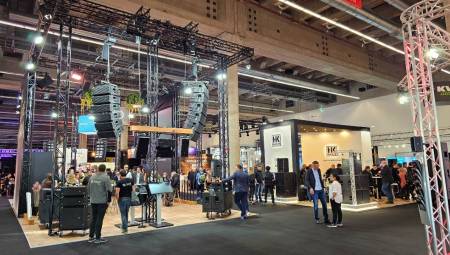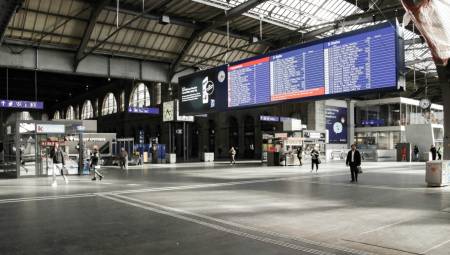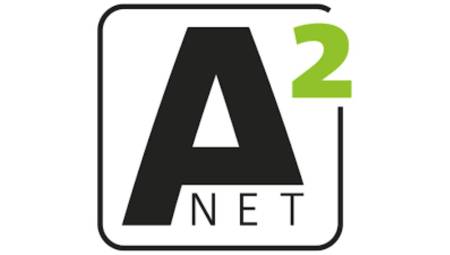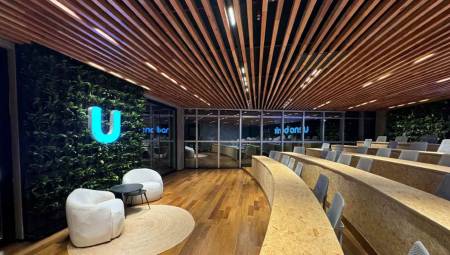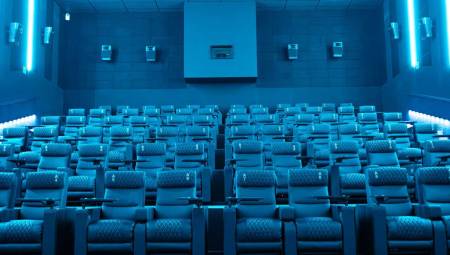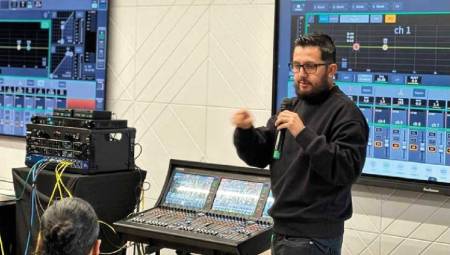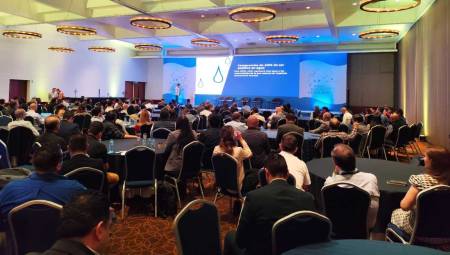 Although microphones are designed for certain types of work, there are some recommendations that the audiovisual designer should always keep in mind. Know what they are.
Although microphones are designed for certain types of work, there are some recommendations that the audiovisual designer should always keep in mind. Know what they are.
By Juan Tamayo*
Boardroom design hasn't really changed in the last 20 years. If we look at it from the outside, any untrained person would see the first thing they would see is a table, possibly of very good design, a video projector with its respective screen and microphones on the table.
How important is the microphone in a boardroom? Some will say that it is the lowest value element in the equipment, others will say that the microphone does not matter as long as it has a good processor. But as a designer, I can say that the choice of microphone system could cause the costs of the other audio elements in the room to decrease.
The first thing that anyone who is integrating a boardroom should know are the characteristics of the microphones they are going to use. For example, if the room is connected to a video conferencing or teleconferencing system, the microphone system should capture almost the entire table, but if it is instead a boardroom, it should ideally capture only the people authorized to speak.
To achieve this type of pre-sale evaluation, you have to know very well the types of microphone that the market offers and their characteristics. Let's start with a slight description of some conventional microphones and others not so conventional:
Gooseneck named for its physical construction, it is characterized by why it can approach the mouth very well, which allows to control very well problems such as feedback or feedback but if the construction of the capture element is not very good it produces certain inconveniences of saturation, pops among other strange noises. There are several capsules such as omnidirectional, cardioid, hypercardioid and even linear.
Yes, there are similar to television where the microphone should not necessarily be located near the mouth making the neck smaller and the microphone look less. That microphone should be located when each person is required to have a microphone to speak, possibly where there is a control or selection of word and where the arrangement of speakers generates drawbacks of retro power.
Mouse (Boundary) are small microphones, let's say low height and are located on top of the table or embedded in it. It is generally used when it is required to capture information on the table to be transmitted to a remote location by videoconference or teleconference. Generally its polar pattern is omnidirectional, and in some cases cardioid. The cardioid is used because it has an angle of approximately 120 degrees, avoiding some noises of manipulation of documents, sheets or even the pencil or pen that is on the table.
Sky microphones: there are two types, embedded and hung with direction. The difference lies in the application that will be given to them at the time of system operation. The embedding microphones will capture the conical area that is under them, if it is a hypercardioid microphone you can calculate with trigonometry the radius of the cone of 100º which will be heard, you can hear what the person speaks but also listen to the sounds that this person generates such as reading some leaves, opening a folder or the sound of the chair when moving.
Those hung in the sky with direction are microphones that can be installed in sky but their pattern will be directed just where the installer wants, usually it is directed towards the mouth of the person, the coverage pattern will be selected according to the application and level of capture that the application required.
As you can see, there are few microphones that are used in boardrooms, here we do not include handheld microphones, flap and headband since these are more for presentations which possibly take another article in the magazine. These microphones are used by almost all systems. For example, goosenecks are used in discussion rooms, mouse necks are used in video conferences.
Although microphones are designed for certain types of work, there are some recommendations that the audiovisual designer should always keep in mind:
1. Identification: one of the big drawbacks that I have seen at the time of operation of the microphones is that the person who uses them, who usually does not know about the subject, does not know if the microphone is on or off. It is common to hear: is it on? If it's a business that's closing remotely, you don't want the counterparty to listen to your doubts, models, or how much you're willing to pay.
2. Feedback is always going to be an inconvenience. When in the same equation we have the variables microphone, speaker and user without experience in microphone, the result will be a feedback sound. But let's not worry, we have the tools to avoid them as wildcards, from location techniques, routing protocols such as mix minus and even processors that have echo and back power control.
3. In many installations (almost all) the big problem is the wiring of the microphones. If they're conventional, you'll need one microphone line per item; if it is a conference system, the special cable with its connectors must be purchased. Many times there are long queues without knowing how to organize the rack so that it does not look very ugly. The solution possibly is to use the data network of the boardroom by connecting the microphones to a point and performing the transfer of content through Dante, as our microphones do and can be processed very easily with Biamp, Bose or other processors that have this data connection.
4. And last but not least, contact the specialist of your preferred brand. He will know which microphone you require with his qualities for and against, helping you to perform a job with a high degree of success.
I hope this basic writing will help you install your microphones. If you have questions or want to expand your knowledge, I invite you to write to me at the email [email protected]
*Juan Tamayo is a Sales Engineer for sound installations in Latin America from the company Audio Technica.




